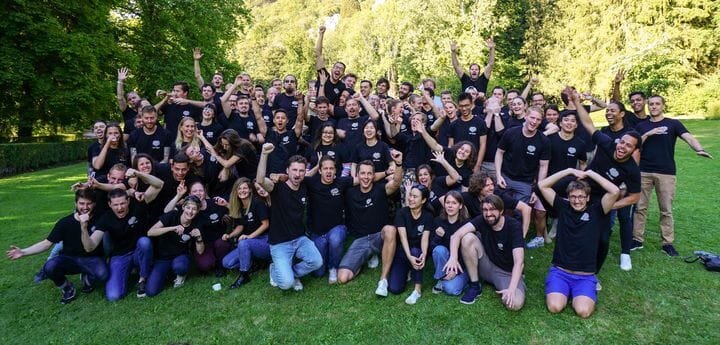![This large group is only some of 3D Hubs’ current staff [Source: 3D Hubs]](https://fabbaloo.com/wp-content/uploads/2020/05/image-asset_img_5eb08d544eadb.jpg)
We received an interesting notice from 3D Hubs, and apparently they are expanding rapidly.
The Amsterdam-based company has been one we’ve been following for at least six years. They began as a community network of desktop 3D printers, (hence the “Hub” in their name), but more recently have switched gears to new markets.
In both cases the business model is similar: connect those requiring parts made with machine operators who have idle time to handle extra work. It’s just that the network (and clients) are now more industrial in nature.
3D Hubs Pivot
They fell victim to the drop in consumer interest that occurred in 2015, which caused many 3D printer companies to suddenly pivot operations into new markets and products. 3D Hubs was no exception to this, and began focusing on industrial markets rather than their original consumer / hobbyist market.
The switch involved several key steps. One was to begin attracting industrial 3D printer operators to the network, and another was to add making technologies beyond 3D printing to their service mix. Both have been done.
The switch in focus caused a great deal of stress among their participants, as you might imagine. However, it seems the company may have succeeded based on indications from their most recent bulletin. Let’s look at some clues.
3D Hubs Expansion
First, it seems that they now employ many more people. When we visited their original Amsterdam HQ some years ago there were only a handful of staff on hand. In the group image at top, you can count over 70 individuals, but the company now says they employ over one hundred people!
They have also established offices in three locations: Berlin, Paris and Chicago. The idea here is to establish a local presence where they can better serve the region through use of local languages, customs and regulations.
![A fancy new home for 3D Hubs in Amsterdam [Source: 3D Hubs]](https://fabbaloo.com/wp-content/uploads/2020/05/image-asset_img_5eb08d5497cc0.jpg)
To hold many of the new staff they have relocated offices to a fancy new setup in Amsterdam harbor, where their new CFO will also take up residence.
3D Hubs Strategy
Their success is likely a combination of two factors. First, the switch to industrial mode is more than likely providing them with a more reliable and larger revenue stream. Secondly, they’ve received considerable investment from four rounds.
Their most recent raise was for a whopping US$18M earlier this year, which surely funds all of the expansion activity we’ve seen recently. It’s very likely the move away from consumer service helped persuade investors to place the money with 3D Hubs.
They seem to be a very different company from the one we knew from years ago. This company is much more focused on industrial use, although the core network concept remains in place.
3D Hubs Challenges
They’ll need all these resources in order to compete. When they were a consumer company there weren’t that many others doing similar things. Now they are essentially competing with long-standing service bureaus worldwide that have tight relationships with client bases. That’s a hard nut to crack, but 3D Hubs has the advantage of worldwide scale, while most manufacturing services are highly regional in nature.
Via 3D Hubs

